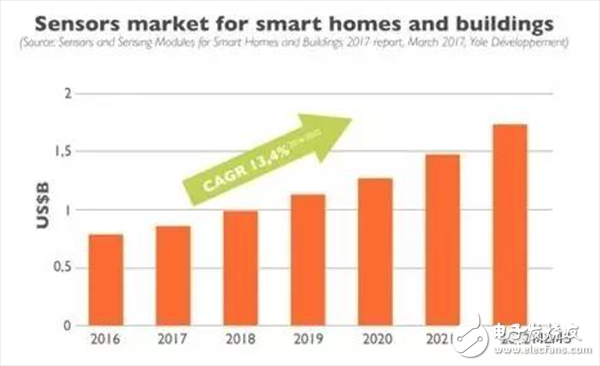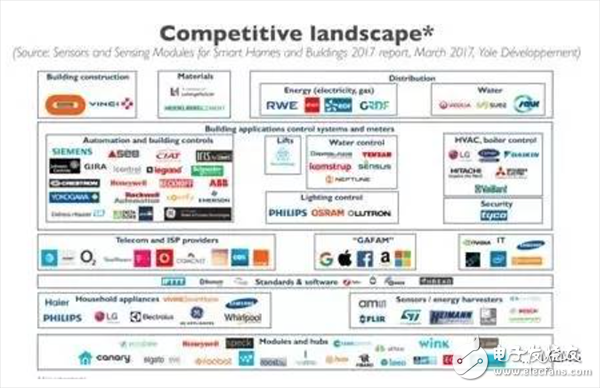The smart home and smart building segments are about to take off. “We are currently at the starting point for the upcoming smart home and smart building application curve,†said Dr. Eric Mounier, senior technology and market analyst at Yole.
As an important part of the global IoT world, the smart home and smart building market has broad prospects!
Sensors and related modules are capable of collecting large amounts of data and are key components in the development of smart homes and smart buildings, enabling smart homes and smart buildings to achieve better energy management and security. Yole identifies and summarizes three main areas in which sensors can contribute: comfort, energy control, and safety.
According to Yole's forecast, the smart sensor and smart building-related sensor market will grow to $1.73 billion by 2022. Accordingly, subscription and service-related sales from sensor data applications are expected to grow to $11 billion. .

Sensor innovation for smart home applications will also boost voice-activated personal assistant growth. For example, in 2016, Amazon has sold 4 million Alexa voice assistant systems, which shipped only 1 million units in December 2016.
Although the smart home and smart building markets have very bright prospects based on the development of society, Yole's MEMS and sensor teams have proposed market and technical barriers that currently affect industry growth. Yole recently released a market and technology research report titled "Sensors and Sensing Modules in Smart Homes and Smart Buildings," which details connected home, building and office applications. In this report, Yole's research is based on sensor and sensor module levels and provides an in-depth analysis of relevant value chains, infrastructure and vendors.
“The smart home and smart building markets have very complex and fragmented supply chains, from raw material suppliers such as concrete to software and IT companies such as IBM and Cisco, all of which are beginning to get involved in this market segment,†commented Dr. Mounier, analyst at Yole. . The competition between building management system (BMS) vendors and GAFAM (Google, Apple, Facebook, Amazon, Microsoft) is particularly fierce.
Manufacturers of building/building control equipment are traditional “candidates†who use smart building sensors. On the Other hand, GAFAM and IT vendors bring "intelligence" to the entire supply chain by providing software and solutions. These companies are entering the artificial intelligence competition to analyze massive amounts of data from smart homes and smart buildings. These vendors have the ability to extract value from the data and provide new services to end customers. In addition, these vendors bypass the traditional construction industry supply chain and sell products to consumers via the Internet.

Not only that, but other traditional vendors in the supply chain will also play a role. Although they are far from the electronics industry, raw material suppliers have begun to consider how to add “smart†components to building materials to provide additional functionality. Yole's analysts list related energy suppliers (energy providers are now also increasingly focusing on household electricity, water and gas consumption), Internet service providers and telecommunications companies, and their entry point into the smart home market.
Kirisun radios,Portable Two Way Radio,Motorola Vhf Handheld Radio,Multi Band Portable Radio
Guangzhou Etmy Technology Co., Ltd. , https://www.digitaltalkie.com